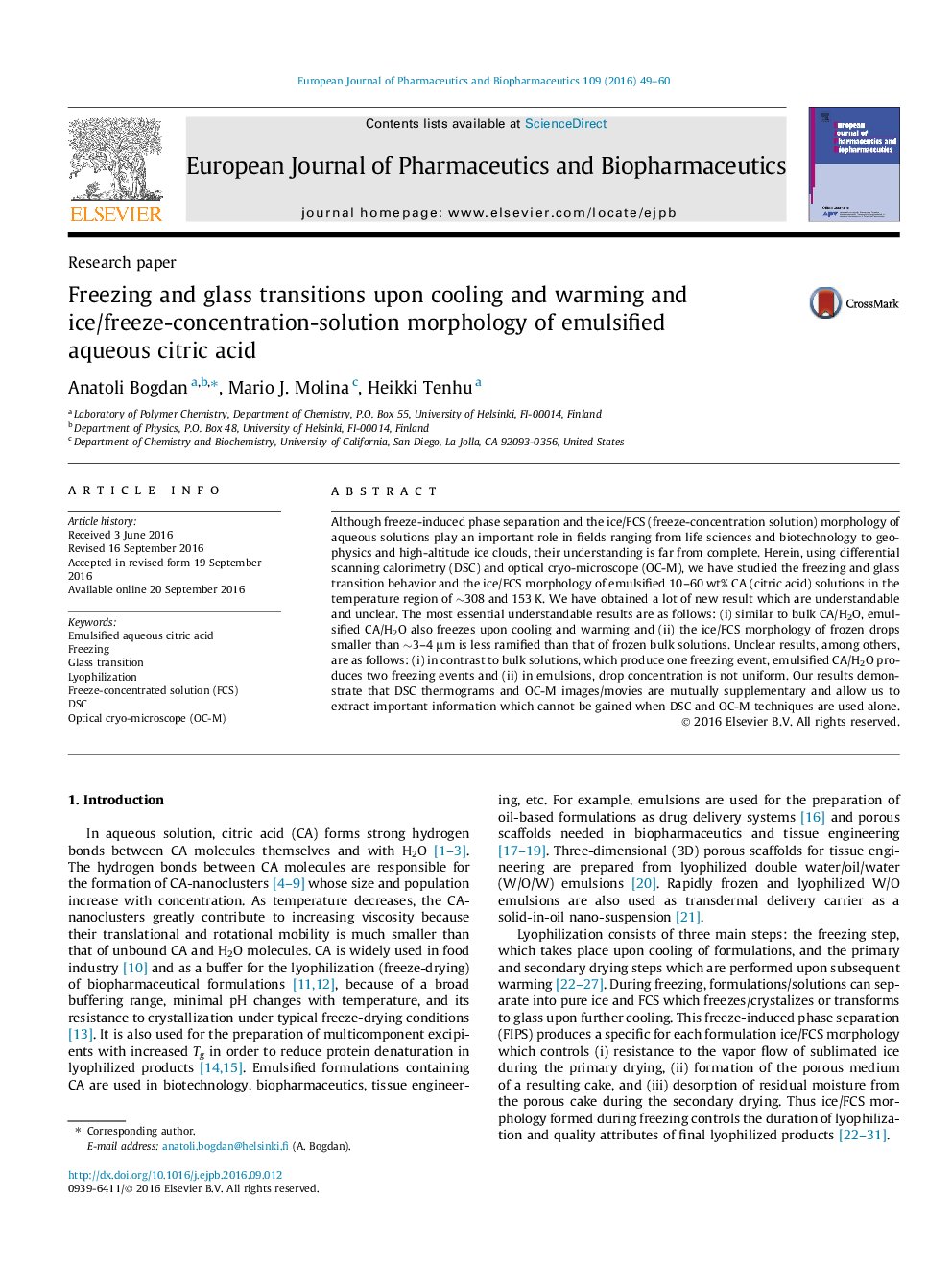| Article ID | Journal | Published Year | Pages | File Type |
|---|---|---|---|---|
| 5521657 | European Journal of Pharmaceutics and Biopharmaceutics | 2016 | 12 Pages |
Although freeze-induced phase separation and the ice/FCS (freeze-concentration solution) morphology of aqueous solutions play an important role in fields ranging from life sciences and biotechnology to geophysics and high-altitude ice clouds, their understanding is far from complete. Herein, using differential scanning calorimetry (DSC) and optical cryo-microscope (OC-M), we have studied the freezing and glass transition behavior and the ice/FCS morphology of emulsified 10-60 wt% CA (citric acid) solutions in the temperature region of â¼308 and 153 K. We have obtained a lot of new result which are understandable and unclear. The most essential understandable results are as follows: (i) similar to bulk CA/H2O, emulsified CA/H2O also freezes upon cooling and warming and (ii) the ice/FCS morphology of frozen drops smaller than â¼3-4 μm is less ramified than that of frozen bulk solutions. Unclear results, among others, are as follows: (i) in contrast to bulk solutions, which produce one freezing event, emulsified CA/H2O produces two freezing events and (ii) in emulsions, drop concentration is not uniform. Our results demonstrate that DSC thermograms and OC-M images/movies are mutually supplementary and allow us to extract important information which cannot be gained when DSC and OC-M techniques are used alone.
Graphical abstractDownload high-res image (231KB)Download full-size image
